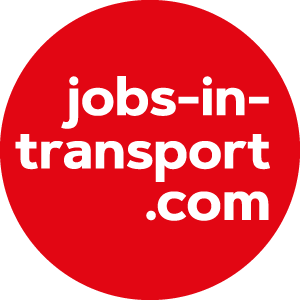
As the number of vehicles on the road continues to grow, so too do concerns around parking, especially for the UK’s towns and cities. In recent years, this growth in car ownership has been met with changes in consumer behaviour and a move towards purchasing increasingly large vehicles – which is further increasing the demand on the country’s parking facilities.
Against this backdrop, achieving optimum parking occupancy has never been more important. As well as ensuring that drivers can find parking quickly and efficiently, it can help to reduce congestion and improve traffic flow. Improving the parking experience also encourages repeat visitors, which could be essential to businesses and other organisations struggling against the tough economic climate.
Optimum parking occupancy is about more than just the number of car park spaces and the time between visitor turnovers. It is about the use of space and how it best supports a community or area, making it more liveable and accessible for all.
Over the years, there have been many different takes on what optimum parking occupancy looks like or how ‘full’ a car park can get without it becoming inefficient for the visitor. It’s a fine balance – if parking occupancy is too high, it can negatively affect traffic performance in an area and create search traffic. However, if it is too low it is not impactful from a space utilisation perspective.
In the 1990s, Professor Donald Shoup of the University of Los Angeles (UCLA) conducted research using the well-known grid structure adopted by many US cities – where each block has 20-25 parking spaces – and found that if there were always a couple of parking spaces available per residential block, there were no parking problems.
This led him to conclude that an 85% occupancy rate of on-street parking spaces is what to aim for to avoid the congestion caused when the spaces are over 85% full, and drivers have to circle around looking for a free space.
Nowadays, the optimum parking occupancy level for both on-street and off-street parking will vary greatly depending on location and function. For example, rail parking, in most instances, will be focussed on long-term stays for visitors who commute via train or take leisure trips. Therefore, a turnover rate of 1.5 vehicles per space each day would be expected, and occupancy rates will not change much. However, retail is a different ball game, with the turnover likely to be around eight vehicles per day at least.
With all this variation, the ideal occupancy rate can be difficult to measure. Most resources seem to agree that it sits between 80-90% for most realistic scenarios.
However, regardless of the percentage, the most important aspect of optimum parking occupancy is that the spaces are being used as efficiently as possible.
One way in which councils and car park operators can ensure that parking spaces are used appropriately and efficiently is by implementing policies. This could take the form of time-limited parking, permit parking or paid parking operators.
Putting a time cap on parking can be really effective. Setting a maximum time limit for parking in a particular area helps to ensure that parking spaces are available for an increased number of motorists throughout the day. It can also help to reduce congestion and wait times by encouraging drivers to move their vehicles after a certain amount of time. However, when implementing such guidelines, car park operators must be careful not to jeopardise the user experience. Motorists still need options and flexibility when it comes to parking. For example, they should be able to extend their stay should they need to.
The digitisation across the sector can enable councils and operators to use parking spaces effectively whilst still ensuring the user experience remains positive. For example, the increased use of applications to pay and manage parking means that local authorities can gather more data points and information about vehicle types, emissions and dwell times. These data points can form the backbone of transport strategy, enabling councils to make more informed decisions, especially when it comes to environmental policies and wider parking controls to make the UK’s cities more liveable.
However, optimising parking spaces – and increasing the liveability of our cities – shouldn’t just stop at implementing policies.
With the UK’s population growing by an average of 0.3% each year space has never been more premium. This is especially true in our cities and more urban areas.
There is an increasing pressure from all parties to ensure that any space is being used as efficiently and effectively as possible. As a result, many councils and businesses are reimagining kerbside spaces to revitalise retail and hospitality.
For example, four parklets have been installed in Hammersmith in central London as part of a larger initiative to encourage green spaces, cleaner air and promote cycling.
Meanwhile, councils like Hounslow are engaging in public consultation to introduce greenery to underused, unoccupied public areas historically reserved for parking.
Unsurprisingly, projects such as these are only increasing in popularity. Transforming these spaces within city environments is having a big impact in terms of the fight against climate change and making the streets greener for residents, shoppers and businesses.
Optimising parking is essential to improve the user experience for both visitors and residents alike. The digitisation currently taking place across the industry offers unique insights to make significant – and informed – decisions about what users want to see. When used correctly these insights have the potential to not only improve the parking experience but totally transform our spaces, making them more efficient and more liveable.
Peter O’Driscoll is managing director of RingGo, a cashless parking solution used by in more than 500 towns and cities nationwide

TransportXtra is part of Landor LINKS
© 2024 TransportXtra | Landor LINKS Ltd | All Rights Reserved
Subscriptions, Magazines & Online Access Enquires
[Frequently Asked Questions]
Email: subs.ltt@landor.co.uk | Tel: +44 (0) 20 7091 7959
Shop & Accounts Enquires
Email: accounts@landor.co.uk | Tel: +44 (0) 20 7091 7855
Advertising Sales & Recruitment Enquires
Email: daniel@landor.co.uk | Tel: +44 (0) 20 7091 7861
Events & Conference Enquires
Email: conferences@landor.co.uk | Tel: +44 (0) 20 7091 7865
Press Releases & Editorial Enquires
Email: info@transportxtra.com | Tel: +44 (0) 20 7091 7875
Privacy Policy | Terms and Conditions | Advertise
Web design london by Brainiac Media 2020